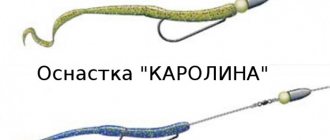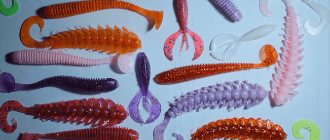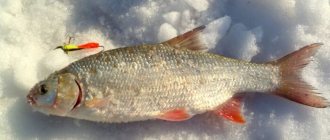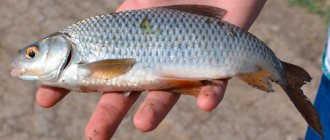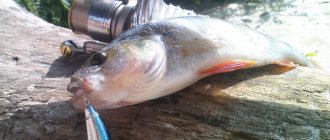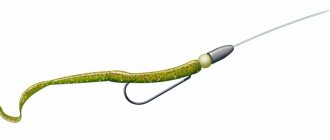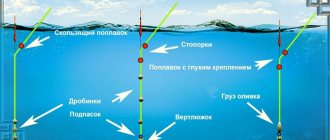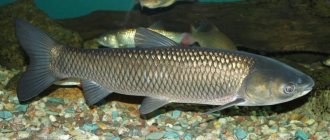Today's range of silicone baits is amazing in variety. Artificial worms for fishing are one of the catchy baits that are suitable for catching many types of fish using various spinning fishing methods.
Silicone worms first appeared on the market at the end of the last century. They were developed by specialists from the Berckley in California, USA and were intended for catching largemouth bass (bass). Now they are produced in different countries, the most popular, although the most expensive, are Japanese baits.
Operating principle
There are silicone worms that have their own game and those that do not, i.e. active and passive .
The former have additional design elements that create vibrations in the water, while the latter do not have them. The twister tail or blade creates vibrations in the water that provoke the fish to attack. However, additional animation is always welcome.
Passive silicone worms require the angler to use special equipment, which allows, when using the correct animation, to give the bait movements that are attractive to the object of the hunt . In addition, most silicone worms are edible, i.e. impregnated with special attractants, which are designed to attract fish from a certain distance and even attack a stationary bait.
What types of fish can you catch?
Depending on the size, shape and degree of edibility of silicone worms, the following types of fish can be successfully caught with them.
Pike
To catch spotted predators, you can use active baits in combination with jig and spaced rigs, and passive worms on a “wacky” rig for fishing in “toad beds.”
Perch
Catching perch with silicone worms is effective when using spaced rigs of various types. Adding silicone bloodworms or a piece of worm to a winter lure can lead to good results against a passive predator.
Zander
Pike perch and silicone worms mean high performance plus exciting fishing. Jig, Texas, Carolina and drop shot - the fishing method is determined by the fishing conditions and the activity of the predator.
Trout
Brook and rainbow trout have been successfully caught using small silicone worms.
Rotan
“Russian bass” are successfully caught with ultralight tackle on small silicone worms on spaced rigs.
White fish
Any white fish can be caught as bycatch when catching a predator with artificial worms, but targeted fishing for roach and bream with artificial bloodworms and maggots is also possible.
Marukyu Power Isome
Date: January 20, 2021 | 811
It is well known that fishing with microjigs and spinning rods with small silicone baits is possible not only in inland fresh water bodies, but also in the sea. This is the so-called fishing style “rock fishing”. Fishing in the coastal strip, in the surf zone. Of course, Japan is the leader in the development of this area of fishing, as well as in the production of bait for it. Well, the Japanese concern Marukyu, famous in fishing circles, has distinguished itself with a silicone bait, also applicable for rock fishing. He released a series of silicone imitations of the Nereis sea worm, one of the most popular baits for sea fishing. This bait is called Marukyu Power Isome . And now we will get to know her better.
The Marukyu company is the owner of such well-known brands that produce various, including soft, silicone baits, such as Nories and Ecogear. Under the Marukyu brand itself, a variety of baits and baits are produced, both for sea and carp fishing. In general, a lot of things. Well, here comes an artificial imitation of the Nereis worm, a full-fledged edible product.
Form . The Marukyu Power Isome lure recreates its living prototype so accurately that there is nothing special to describe. A very elongated body, smoothly tapering towards the tail, having segmentation and two rows of short legs. There are mites on the head.
Class . Marukyu Power Isome is a silicone worm.
What does it imitate ? Nereis sea worm. Nereis is also popularly known as a sandworm. It is found in coastal areas, especially in estuaries, where it can be obtained from the silt and sand at the bottom. Nereis is one of the favorite foods for a variety of marine fish.
However, despite the initial sharpening for sea fishing, such an elastic artificial worm will certainly find its prey in fresh waters. And both predatory and any peaceful fish can become it.
Active or passive . Marukyu Power Isome is definitely a passive bait. There is no game of your own here. The worm or a piece of it needs to be animated and twitched with the rod.
Dimensions . The Marukyu Power Isome worm is available in different sizes: 8cm, 10cm, 11cm. And various thicknesses: L, XL.

Package . Marukyu Power Isome rubber is packaged in packs with a zipper. Available in packs of 20, 15 or 8, depending on the size of the worm.
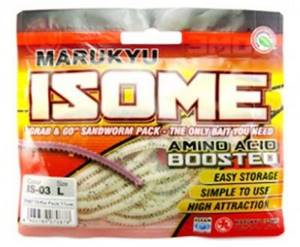
Price . A pack of Marukyu Power Isome worms costs about $6-7. Considering that the rubber is truly unique, and there are quite a lot of baits in the packs, this is a normal price offer. Also, we should not forget that in most cases it is unwise to catch a whole worm. And when fishing with fragments, pieces, we get 2, 3, 4 times more bait.
Material . Marukyu Power Isome lures are made of very soft, extremely mobile silicone. The Nereis worms themselves are very tender, elastic, and tear easily. Well, their imitation from Marukyu is, of course, a little tougher, but not much. So, these worms play very well with their whole body and paws. Of course, this is extremely attractive to fish. However, strength, of course, is not one of the strengths of this rubber. Power Isome breaks easily.
Of course, the material is edible, containing an attractant and amino acids borrowed from a living prototype. so this is a very good deception. Of course, it’s better to catch live Nereis. However, if you know how “easy” they are to get, and how “well” they are stored, then you will think hard about using an artificial substitute. By the way, the author of these lines knows what he is talking about, because... personally engaged in the production of live sandworms and fishing with them. Walking up to your knees in muddy mud that stinks to the point of nausea, looking for those very Nereis in it - this is what you have to face. Well, or you can buy worms. However, you need to make sure they are fresh, because... they spoil very quickly. Well, it turns out that 1 live worm will cost, well, maybe a little cheaper than 1 Marukyu Power Isome. So, the choice in favor of living profit is not so obvious here. And for fishing in fresh water, there’s nothing to talk about at all.
It is known how the Japanese are sensitive to the cleanliness of the sea and the environment. So, Power Isome baits are made of completely bio-soluble material. So, after some time, lying on the bottom of the sea, this “rubber” completely dissolves, without forming any harmful substances. So that!
Colors . There are few color options. All of them, to one degree or another, are variations in the colors of real sea worms. Depending on age, breed, habitat, they can be light grayish, red, pink, or brown-green.
How to mount . You can mount Marukyu Power Isome baits in a variety of ways, depending on where and what kind of fish you are catching. You can fish with a whole worm by placing it on a micro jig hook, a swivel rig, or a small jig head. Can be used on a lead or Carolina rig. Normally, you can use Marukyu Power Isome to rig a weki. A thick worm can be planted as a whole, but a thin one can be planted in a piece. Fishing for pieces with a micro jig or a garland is a normal practice.
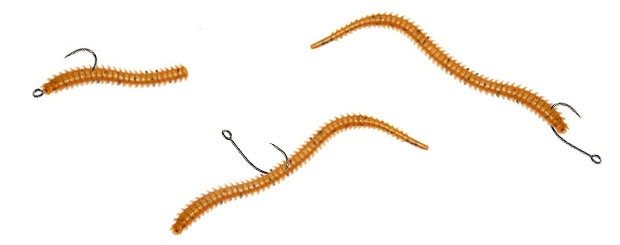
Purpose . You can catch absolutely any fish with such a natural looking and smelling silicone. Large and small, sea and freshwater. It could be a tiny goby or a respectable bream, ordinary perches or pelengas...
Range . Since the Marukyu Power Isome worms are very thin and elastic, they provide minimal resistance in flight. And, therefore, they can be thrown far. But, given the super-soft material, you should not cast too hard so that the bait does not fly off...
Wiring . Various pulsating movements, tosses, micro-twitching, waves, diluted with pauses.
Advantages . Very high realism, softness, resemblance to a real worm.
Flaws . The same softness is the reason for considerable consumption of baits due to them being torn off by fish, flying off during casting, and damage by hooks.
Conclusions . I am sure that if you practice sea fishing, then you should definitely at least try fishing with Marukyu Power Isome artificial worms. This will allow you to form your own impression and compare their effectiveness with fishing with live bait. I also highly recommend that microjig fishermen who fish in fresh waters pay attention to this unique rubber.
Share with your friends:
Categories: Miscellaneous · Tags: Marukyu, Sea, Nereis, Lures, Rockfishing, Edible, Worms
Characteristics of baits

Form
The most common baits are of the following form:
- Worms with a twister tail. Such worms often have various transverse ribs and rings on the body and end in a narrow twister tail, which can be quite miniature, or can be as long as the body of the worm;
- worms with a spatula. At the end of the worm's body is an oval-shaped blade or blade. A similar worm is placed on a hook so that the blade is perpendicular to the axis of the hook. Such worms also have ribs and rings on their body;
- worms with a needle tail. The tail of the worm ends in a short needle. Such worms may have shallow ribs on their body;
- worms for "weki". The worms have the shape of an elongated “sausage” without any additional elements;
- worms imitating natural bloodworm larvae and maggots. Used for fishing with float tackle, feeder and winter fishing.
Color
For bass fishing, silicone worms of soft colors are considered more catchy: purple, brown, gray, black. In our conditions, in addition to the listed colors, bright colors can also be effective: lemon, orange, red. The general recommendation is the same as for other baits: clear weather and clear water – baits of soft natural colors; cloudy and muddy water – “acidic” colors .
Size
Silicone worms can range in length from one and a half to several inches. When catching different types of fish and using different types of equipment installation, baits of the required size are selected.
Taste
Many silicone worms have a salty taste and an odor that can be pleasant or unpleasant. Edible baits contain an attractant that can attract fish for a long time, provided the worms are properly stored. The attractant recipe is kept secret. The Berckley company sells some of its products in jars with attractant and even produces containers with liquid into which you can dip baits directly while fishing.
Expert opinion
Knipovich Nikolai Mikhailovich
Zoologist, hydrobiologist. I am interested in fishing at a professional level.
Attention! Silicone worms should be stored carefully. Some of them are highly aggressive and can melt other baits and even boxes. Worms of different colors should not be mixed.
Sinker
Silicone worms can be additionally loaded if this is dictated by fishing conditions. So, when fishing with a “wacky” rig, a nail is inserted into the front part of the worm, which increases the casting distance and the speed at which the bait falls.
Passivity and activity
Worms with active play are used when fishing with more dynamic rigs (jig, texas), passive baits are more suitable for fishing with a drop shot, Carolina, “wacky”, retractable leash, although ultimately it all depends on the activity of the fish.
Lucky John Wiggler Worm Edible Silicone Review. The worm is the best “friend” of the fish!
In recent years, imitation of various slugs, worms and crustaceans has become the most popular among spinners.
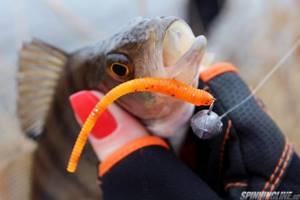
This is undoubtedly influenced by several factors. The first is constant pressure on the reservoir. The second is poachers, who, unfortunately, are everywhere. The third is factories that are located near water and discharge their waste there, thereby polluting the aquatic environment and poisoning the entire ichthyofauna. The fourth is permanent construction, which is often carried out near the water in order to improve roads overlooking the sea. Fifth - unstable, abnormal weather, which also very often affects the fish bite. And the last factor is the preference of the fish itself in favor of passive silicone baits.
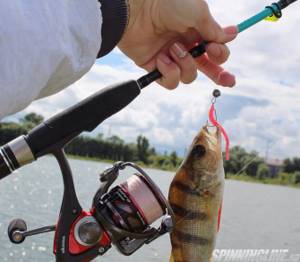
All these listed factors often make our fishing difficult and we constantly have to look for the “key” to solving this problem. Fishing with various imitations of worms is spot fishing, in which you can tempt even the most passive and frightened predator to bite.
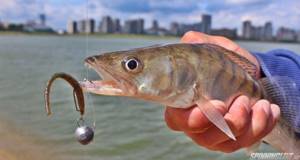
Therefore, in this story, we will talk about one new and at the same time very simple “edible” silicone bait called Wiggler Worm.
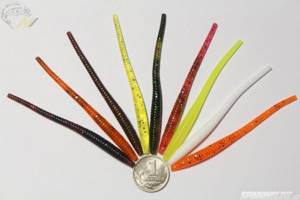
The LJ Wiggler Worm is a passive "edible" silicone bait that closely resembles a common dung or earthworm. The length of this worm is 61mm and it weighs only 0.5g.

This lure was created for pond trout fishing, but is also ideal for rock fishing. Our freshwater predators also eat it with great pleasure: perch, pike perch and bersh.
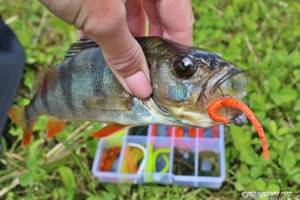
The silicone composition is strong enough that you can use one bait multiple times. The artificial Wiggler Worm has the attractive, fish-loving scent and taste of shrimp. The LJ Wiggler Worm silicone lure is available in 10 popular colors to catch a wide variety of fish species. Plus, it has a multi-color packaging format, where in one package you will find 9 worms of different colors for different fishing conditions.
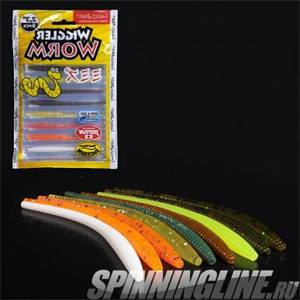
Equipment.
The edible rubber LJ Wiggler Worm is ideal for various classic jig rigs in the micro jig category. Classic installation of this bait using a single hook No. 10,8,6 “Float Rigger” and a collapsible Cheburashka from 2 to 6g. Also, this bait goes well with small tungsten jigs up to 2g. When catching a predator within the city, in the grass or on the terrain, it is advisable to use an offset hook, which also goes well with this bait. In heavily overgrown areas of a reservoir, when fishing for perch or rotan, you can mount a worm on a “wacky”, “drop-shot”, or “jig rig” rig. This lure will also work well on Carolina and split shot lead rigs.
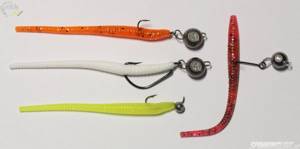
Animation.
The classic search animation consists of 2-3 smooth tosses of the rod, after which our worm falls to the bottom, and we wait a pause of 1-2 seconds and repeat the retrieve. With this type of wiring, the predator attacks our bait either when it falls, or when the bait has fallen and lies motionless for some time on the bottom.
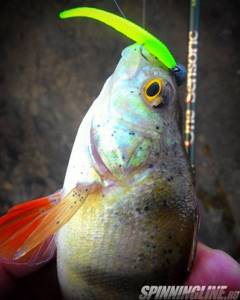
Point retrieving, 4-5 short but fairly fast jerks with the rod and a pause of 2-3 seconds. This kind of wiring is relevant when you found a microrelief or you had a bite in a given place.
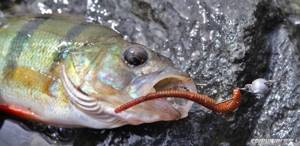
A combination of these two postings brings good results. We cast and wait until our bait falls to the bottom. We make 2-3 smooth tosses with the rod, the bait falls to the bottom, wait a pause of 1 second and start making 5 short jerks with the spinning rod, after which we wait a pause of 3 seconds and repeat the retrieve.
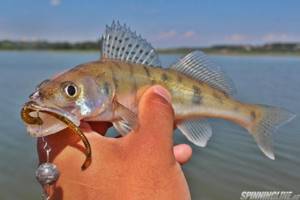
The worm has always been a favorite delicacy of fish, and not a single fish has ever refused such a delicacy under any circumstances.

Of course, we are talking about an artificial worm, but at the same time an “edible” one - LJ Wiggler Worm, since the silicone contains an attractant and amino acids. Of course, in order to outsmart, deceive, or catch a fish with artificial bait, you need to have some experience, but believe me, such fishing is much more interesting and exciting than sitting in one place and putting live worms on a hook.
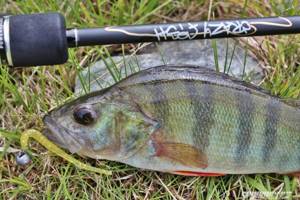
Try to set and find the optimal wiring for your LJ Wiggler Worm, to which the fish will react on every cast and you will understand the power of passive silicone baits.
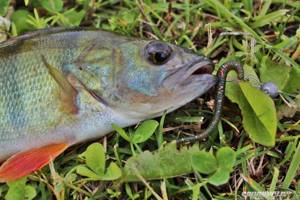
Similar models: Berkley Gulp.
Types of postings
Wiring when fishing with silicone worms is chosen based, first of all, on the type of equipment.
Jig equipment
When fishing with jig spinning, the following types of fishing are used:
- stepped wiring;
- jerk wiring;
- drawing;
- wiring with toss.
Carolina rig
Caroline wiring assumes:
- uniform wiring;
- "stop'n'go" wiring.
- uniform wiring (drawing);
- uneven wiring (jerking and stopping);
- game on the spot.
Retractable leash
Use of a retractable leash includes:
Drop shot
When fishing with a drop-shot rig, use:
- playing on the spot;
- Retrieving with pauses and playing along with the tip of the spinning rod.
Texas rig
You can fish with a Texas rig in the following ways:
- stepped wiring;
- uniform wiring;
- wiring with pauses when fishing in snags.
Equipment "veki"
The “wacky” rig makes slow, irregular movements as it sinks to the bottom.
Fishing from the bottom and in the water column
Basically, fishing with silicone worms is done at the bottom. In order to fish in the bottom layer, use a drop-shot rig or a retractable leash and a Carolina rig with floating silicone worms. Such baits are available in the range of some companies.
Expert opinion
Knipovich Nikolai Mikhailovich
Zoologist, hydrobiologist. I am interested in fishing at a professional level.
Healthy! Some fishermen place a piece of polystyrene foam in front of the hook with the bait, thereby giving the worm positive buoyancy. You can fish with a silicone worm in the water column and even in the subsurface horizon, using bombards of varying degrees of buoyancy.
How to attach a worm to a hook
Float equipment
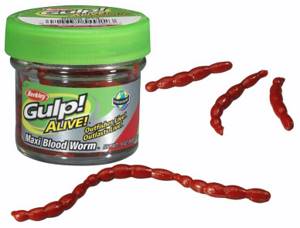
When specifically fishing for perch and white fish on a float tackle or on a feeder, Berckley Power Blood Worms silicone bloodworm larvae are used. Place several of them on the hook, piercing them in the middle.
Spinning equipment
On any spinning equipment, two types of mounting a silicone worm on a single hook are used: regular (with an open tip) and non-hooking. With the usual method, the bait is simply put on the fore-end, sometimes secured with a silicone stopper that prevents it from slipping when casting. For the non-hooking method, an offset hook is used. Installation is carried out as follows:
- They pierce the back of the worm all the way through;
- move it to the offset step;
- They pierce the body of the worm with a sting, hiding it inside.
Then they move on to the actual installation of the equipment.
Texas rig
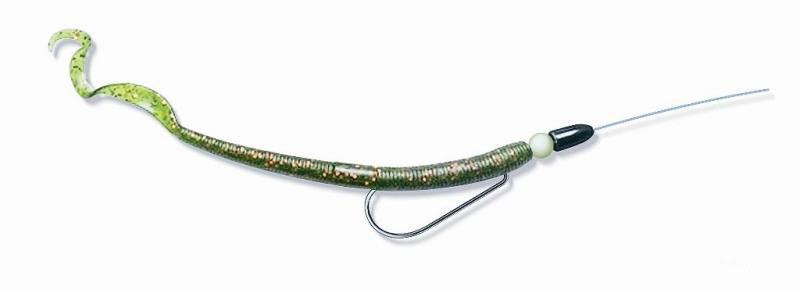
A fishing line is passed through the bullet sinker and a hook with a worm is tied, hiding the eye of the hook in the recess of the sinker.
Carolina rig

The worm is tied to a leash made of monofilament fishing line or fluorocarbon, the fishing line is tied to a swivel, which fixes the sliding sinker on the main fishing line.
Jig head
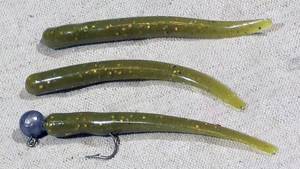
A silicone worm is simply put on a jig head in the same way as a twister or vibrotail. When fishing with a hinged rig, you can use a double.
Drop shot
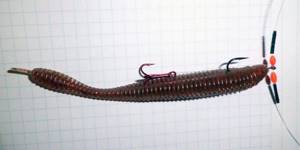
On a drop-shot rig, the hook is located perpendicular to the main line or leader. The worm is put on in a non-hooking version or the hook is left open. In addition, another type of installation is used on drop-shot rigs. The front part of the worm is put on the hook so that the whole body can move freely in all directions.
Veki equipment
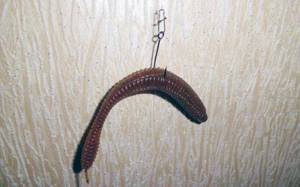
When fishing with a “wacky” rig, the middle rig of the worm is pierced so that both ends seem to hang down. Fishing in thickets of grass involves the use of hooks with wire protection against snagging.
Top 10 silicone baits for perch
Despite the fact that perch is not picky, its tastes can change not only depending on the season, but also throughout the day. Therefore, it is advisable for an angler to have several different models of silicone in his arsenal. Their assortment is replenished every year with new species, developed taking into account the characteristics of the reservoir of a particular area and the behavior of perch. We present to your attention the top 10 baits. Below are the best silicone baits for perch.
Reins Fat G-Tail Grub
The Japanese-made Reins Fat G-Tail Grub is a classic twister-style lure with a voluminous ribbed body with a soft, thin but wide “G” shaped tail. Silicone contains a large amount of salt, which makes it “edible”. The persistent attractant with which the silicone is impregnated does not erode or wash out and attracts fish from a long distance. Thanks to the ribbed body, additional excitement is created on the water.
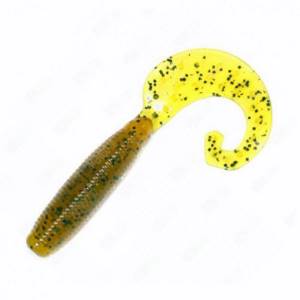
The color can be brown, pink, green, blue. Works effectively on slow wiring. To catch large perch, small baits are used. Produced in sizes 2″, 3″, 4″.
Lucky John Ballist
Soft edible bait Lucky John Ballist made in Latvia. It has a ribbed, worm-shaped body with a G-shaped small tail. Made of high quality material, impregnated with shrimp scent. Well imitates the body of natural bait. Streamlined shape gives high flight

characteristics, which is an advantage when fishing from the shore when long casting is needed. Universal for different wiring, both uniform and jerky. Works in spring, summer, autumn. Characterized by high catchability. Affordable price.
Boxer Fanatic
The edible active vibrotail Fanatic Boxer was developed based on a study of the behavioral factors of fish in domestic reservoirs. The material is elastic, soft, retaining its properties in cold water. Filled with salt and natural attractant. Size range: 2″, 3″, 3.5″. Available in 17 colors.
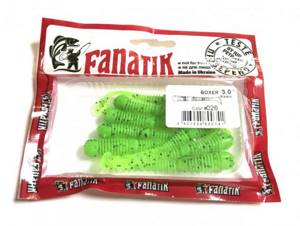
A distinctive feature is that it creates a specific noise and vibration in the water during wiring, which attracts predatory fish. A bait with a cut off tail has shown effectiveness in catching passive predators. A good model for both beginners and professionals in spinning fishing.
Manns Twister
The classic Manns Twister bait in the form of a worm or larva with a grooved body and a movable sickle-shaped tail made of thin silicone, creating maximum vibrations. Thanks to the delicate, soft rubber, good play is ensured, both on a uniform drive and on a stepped drive along the bottom.
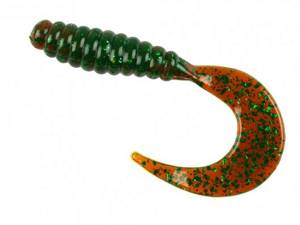
The bait is universal, can be used on a hinged mount and on small jig heads. A wide range of colors, low cost, high catch rates are the advantages of Manns Twister.
Reins Bubbling Shad
Edible silicone Reins Bubbling Shad, infused with a scent that excites fish to attack. It has the shape of a vibrating tail with a ribbed body ending in a movable blade.
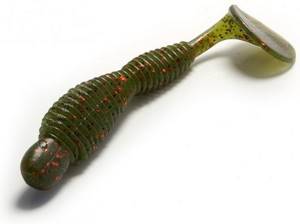
A special feature is air bubbles created by large ribs on the body during wiring. The paddle gives the Reins Bubbling Shad smooth play. When cast it flies well. Thanks to the high-quality material, it can withstand a significant number of bites. Size range – 2″, 3″, 4″. Many color options allow you to choose the bait that best suits specific conditions.
Crazy Fish Polaris
The Crazy Fish Polaris bait from a domestic manufacturer in the form of a slug is flying, passable everywhere, and fast. It has no active playing elements. Using different types of wiring, you can give it the necessary mobility and attract perch. Made from soft elastic silicone and can have one of six attractant fillings (squid, anise, shrimp, garlic, raw or fried fish).
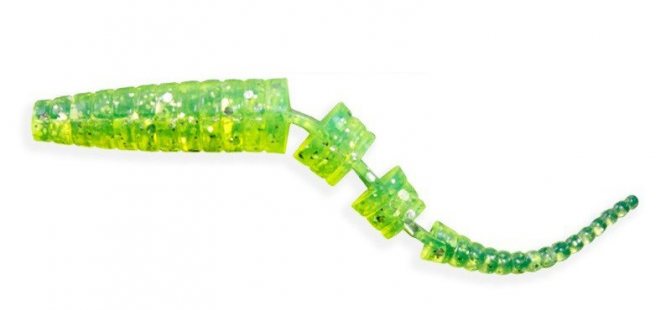
It can be mounted with a jig head, on a hinge, or on a retractable leash. By varying colors and smells, it is possible to choose the most suitable option for catching perch on the spot. Size range: 4.5, 5.4, 6.8, 10 cm.
Properties adjusted to the characteristics of domestic reservoirs and an affordable price made it popular among beginners and athletes.
Keitech Sexy Impact
25 varieties of Japanese-made Keitech Sexy Impact baits have a common feature - the inner and outer parts of the slug are made of different silicone. Salts are introduced into the inner layer, which load it. The shell is light, soft and durable. This together ensures correct positioning in the water and good activity.
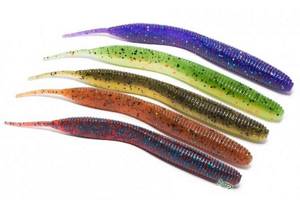
The shape is specific, complex, with a thin and movable tail. There is a recess on the back for an offset hook. It is recommended not to tightly constrain the body of the slug with a crochet hook. It's good if 2/3 are free and playing. It showed excellent performance when guiding with waves and short jumps along the bottom. Suitable for different types of installation.
{banner_vnutri-kontenta-3}
Keitech Easy Shiner
Japanese bait Keitech Easy Shiner, in the form of an edible vibrating tail with a groove for an offset hook, is suitable for attracting large perch. Thanks to its special shape with a minimum number of hooks, it is effective for guiding in overgrown and snagged places. For its manufacture, a soft, pliable, environmentally friendly material was used, which, when decomposed, does not pollute the reservoir.
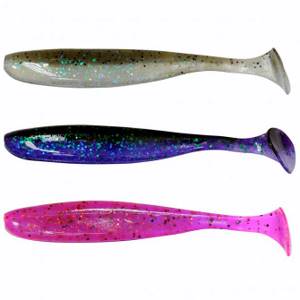
The Keitech Easy Shiner -3 model has become especially famous among spinning anglers as the standard of an excellent search engine that allows you to attract not only perch, but also pike, catfish, and pike perch.
Reins Shake Swamp
Relatively long (7.5 cm) the Reins Shake Swamp bait has a body reminiscent of a worm or leech. The length is adjusted by trimming. Recommended rigs: articulated, Carolina, Texas, drop shot.
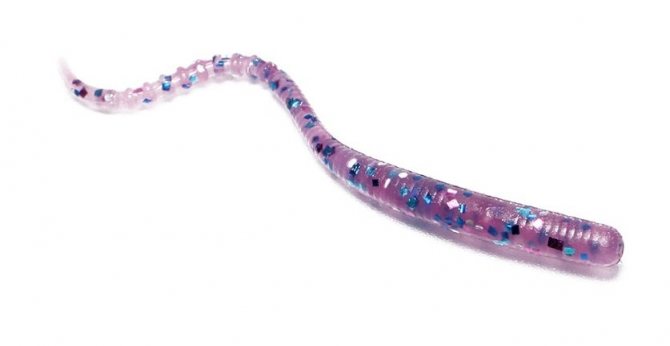
The new modification, thanks to its special ribbed tail, is very active and reacts even to slight movements of the rod tip. Edible dense silicone of different colors with a shrimp smell will attract the attention of not only perch, but also non-predatory fish.
Bait Breath Fish Tail
The Bait Breath Fish Tail lure is shaped like a classic silicone slug and has a ribbed body and a flattened tail. The best catchability is shown on jerk retrieves with a minimum load for specific conditions.
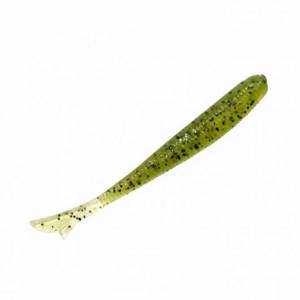
Fish Tail looks like a weakened fry, which awakens the predator's instinct to attack.
A size of 5 cm will attract medium-sized perch; for large specimens, models of sizes 7 and 8.25 cm are suitable. The cost is average.
The success of fishing is determined by many factors. Bait is not the last place on this list. A huge selection of affordable silicone baits allows you to find a suitable option for catching perch.
Fishing with an artificial worm
Any casting spinning fishing consists of the following stages:
- Casting Passive silicone worms have good aerodynamics; baits with a tail fly somewhat worse. Silicone stoppers are used to secure the worms on the hook.
- Wiring. Wiring when fishing with a silicone worm should be selected based on the type of fish the angler is hunting and the fishing conditions. For passive fish, the retrieve should always be slower. Perch is one of those fish that do not really like to chase bait, but prefer to look at it and taste it. For pike, edibility is not as important as the appearance and performance of the bait. Pike perch can react to the fast movement of the bait, and to its slow movement, and to the play of the worm in one place.
- Bite and hook. Pike and zander take the silicone worm without hesitation. The hook should be done immediately. The perch often grabs the worm by the tail and often tears it off. When fishing for perch, especially with spaced rigs, you need to let the predator swallow the worm, and only then hook it.
- Fishing. Fishing for pike and pike-perch should be done with force, naturally, working with the spinning rod and the drag of the reel in order to tire out the prey. When landing a perch, you should not rush: this fish has weak lips that can tear if the angler is in a hurry.
Wiring silicone worms
Today, store shelves are filled with all kinds of silicone! You can find bait of almost any geometry and size. Of all types of silicone baits, worms stand out. This class of baits appeared on the market quite a long time ago. Among Western anglers, silicone worm imitations are almost the favorite bait for catching bass. In our country, these baits are not as popular as in America, but, nevertheless, people catch them. And every year it becomes more successful and intensive.
If you carefully study the assortment of stores, you will see that worms made from edible silicone predominate on sale. And this is not surprising. The worm is a passive bait (it has no active moving elements that create vibration when retrieving). Smell and taste are properties that attract fish even if they are in a state of passivity. It happens that a predator even picks up a worm lying motionless at the bottom! This is what edible means... Many novice fishermen even have a certain stereotype that a worm must have taste and smell, otherwise it will be of no use. I think that if you ask those people who have been spinning for no more than 5 years, they will not remember how worms made of ordinary silicone (inedible) were lying on the shelves. But it happened! Jigoviki bought such baits and successfully caught perch, pike perch, pike, catfish, bream, carp and other fish in our waters with them. And this despite the fact that the baits were only visually attractive to fish! Based on this, it is worth drawing a conclusion: a worm can attract fish with its movement in the water. And taste and smell are just properties that enhance the bite. Below I want to talk about the wiring that is used when fishing with worms. All of them are good at luring a predator, even if the worm on the hook is inedible (but it’s better to use edible silicone).
My favorite worm behavior is dragging along the bottom. During its execution, the bait moves directly along the ground, like a living worm. In this case, the head weight in front of the bait raises a cloud of turbidity. It is precisely this cloud that attracts fish. The fact is that the bottom turbidity is raised by the fry, which is looking for food at the bottom. The predator knows this well, therefore, having noticed the dregs, he strives for that place. When he swims up to the bait, a surprise awaits him: a fat worm instead of a fish. The fish has no choice but to eat the worm. While dragging along the bottom, you must take pauses. As experience in fishing with worms shows, during the pulling phase, bites occur extremely rarely. The fish prefers to take a worm that has just begun to move, or a motionless bait. By the way, to say that the bait is motionless during a pause is incorrect. There are still micromovements. And if you use worms with an air cavity inside (these are now rare, however), whose tail is raised above the bottom, then their movements are more distinct and seductive for fish.
Another effective worm retrieve is a short step. The technique is very simple: you need to let the bait sink to the bottom and then guide it with a step. During the cycle you need to make only one revolution and a two-three second pause. This wiring works well when fishing for pike perch and pike perch. For some reason, they really like this movement of an oblong piece of silicone...
Nowadays there is a lot of talk about a style called “Eyelids”. I don’t think it’s worth telling what it is (the site already has an article about eyelids, where the author explains what it is and what it’s eaten with). We started talking about eyelids quite recently, but it has been known for many, many years. I remember how, 6 years ago, we hooked worms across the body, attached pellet weights to the fishing line (or put a bead and a sliding sinker), and used chaotic twitches to set the worm’s movements... Eyelids are an effective and very simple technique (no matter what they say) . My friend compares this style to twitching because the wiring techniques are very similar. Pike, perch, rudd, ide, chub and, of course, pike perch are well-tempted on the veki. In general, you need to write a separate article about the eyelid technique, where you will talk in detail about the substyles of wiring.

Veki equipment
Despite everything, worms can be carried out with simple step wiring without any tricks. The fish will bite, especially if it is active. In general, if you are interested in fishing with silicone worms, then you need to expand your arsenal of skills. If you learn to fish well with silicone worms, then you will always be with fish, and with the most varied and amazing ones! No tail, no scales.
